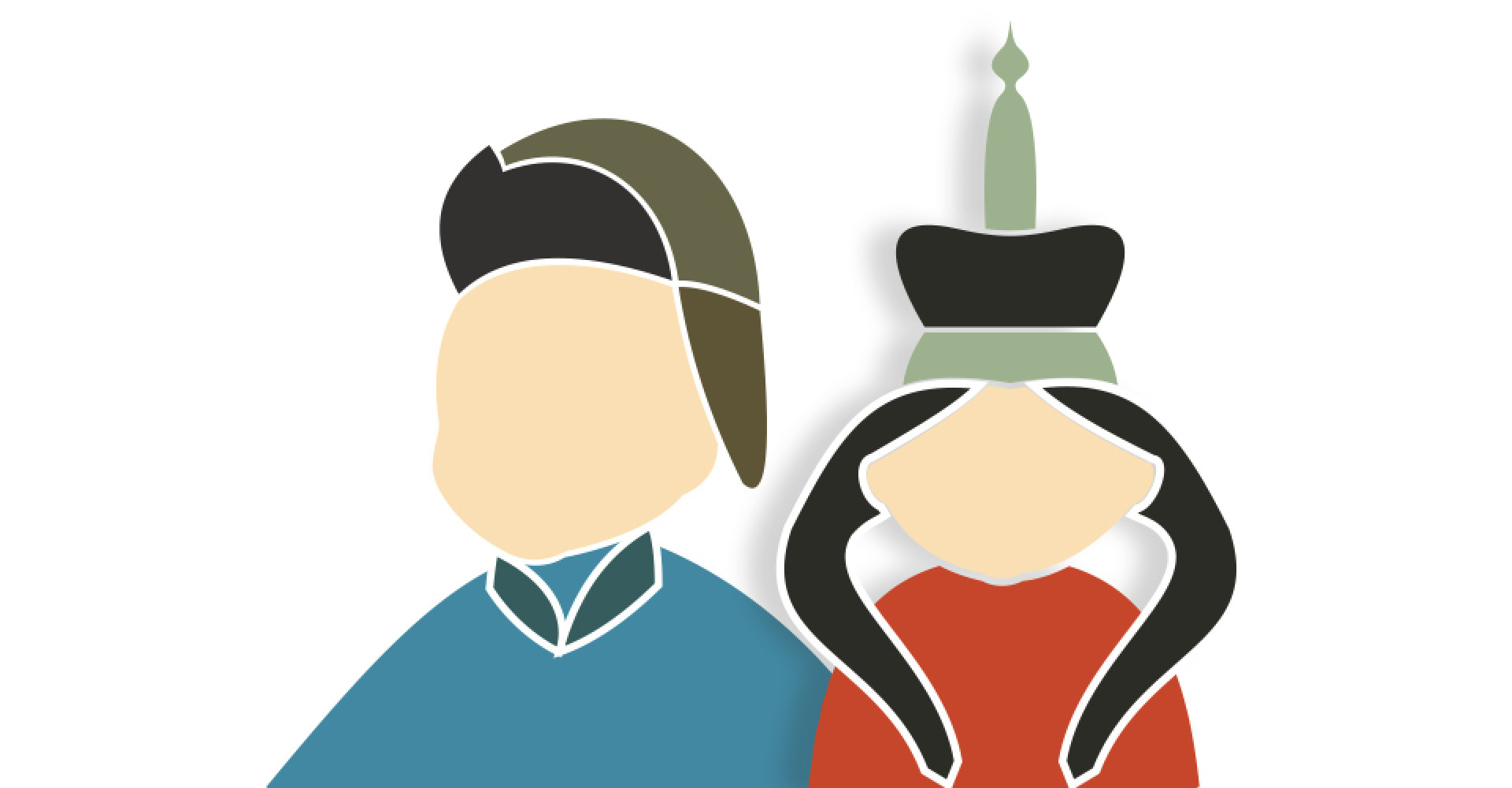Dariganga residents reside in six soums of the Sukhbaatar province in the south-western part of the country and are named Dariganga in the name of the Dari Ovoo and the Ganga Lake. When Khalkh Mongolia was defeated by Manchu in the late 1690s, the group called Dariganga was generated by the people coming from Tsakhar, Khalkh and Oirad for herding the horses. They were moved to between the Mergen Khan's khoshuu of Tusheet Khan province and Khurts Van's khoshuu of Setsen Khan province . They are considered as another ethnic group because they have been mixed up for many years and have created a slight difference in the material and culture of their own culture, or clothing, ornaments, feast and wedding. About the language, it is very similar to the Khalkh.
The contribution of Dariganga to Mongolian handicrafts is a silver art. During the Manchu period, the wages of silver were paid to the herdsmen. It started with jewelry and ornaments, and the shape was never repeated.
From 1800 to 1970, many famous protagonists were born and they developed Dariganga style. They are made of silver saddles, bridles, knives and sapphires, which are unique and double-framed, engraving with moving dragon, flower leaf and butterfly. Dariganga men decorate their deel with the silver and women wear the celebration clothing. Dariganga's wife's deel has dappled sleeves as the Tsakhars have. (Source: Ch. Bulganbadrakh, "Mongolian Directory" bulletin)
In the summer, Dariganga dressed in robes and coats, and in spring and autumn, they wore cotton, lambs, venus, knees and jackets. Dresses and jewelery were largely blue, blue silk, four-eared parrots, red brown spring shoes, yellow silk belt, blue souvenir bags and ultra-fine, delicate and blond knick knacks. They were using the bridles, deel made of wood and decorated with bones and silver as "Dariganga design" which was famous in not only Mongolia, but Asia.
"Shureg women for coral, Khalkh women for tobaccopipe". The Dariganga women wear very similar deel and uuj except chubby chest and shoulder. They usually use the coral, which maybe generated the phrase above. The trunk is a pearl cage that has three coral wraps on the forehead, with a pearl cage and a pair of pearls with turquoise. Their hair ponytails are rich in corals.
In Mongolia, there are 26 834 of Dariganga people, accounting for 0.9 percent of the total population and inhabiting in the Asgat, Bayandelger, Dariganga, Naran, Onon, Tuvshenshiree, Uulbayan and Khalzan soums of Sukhbaatar province.




